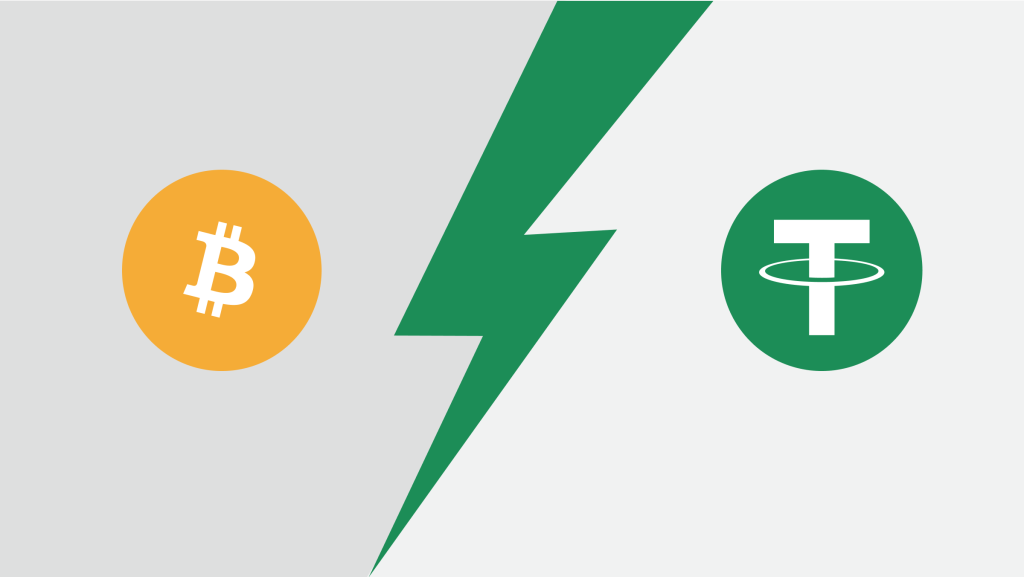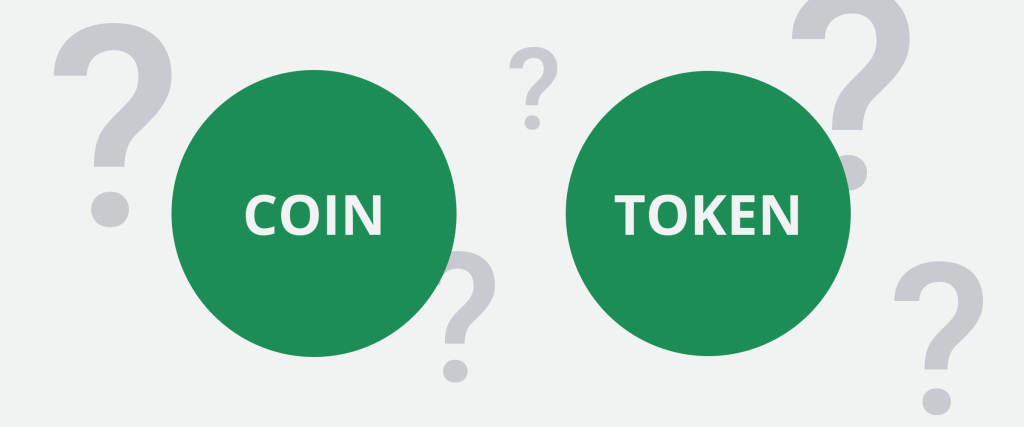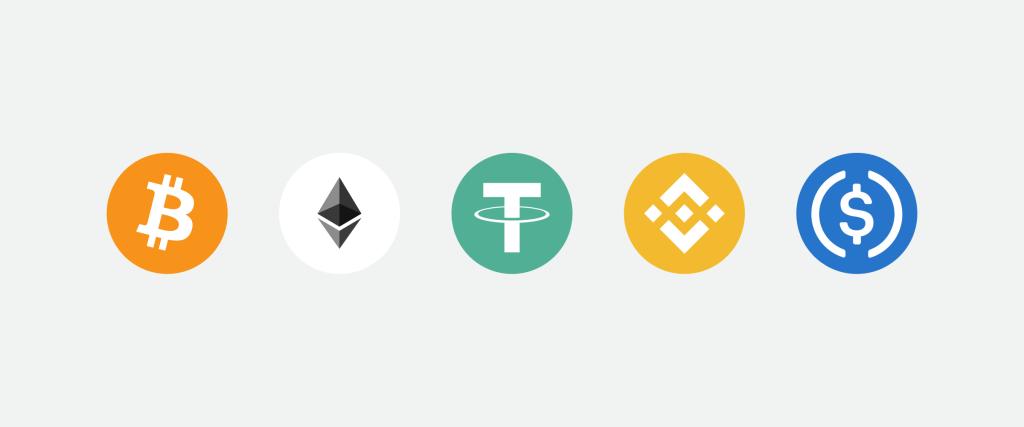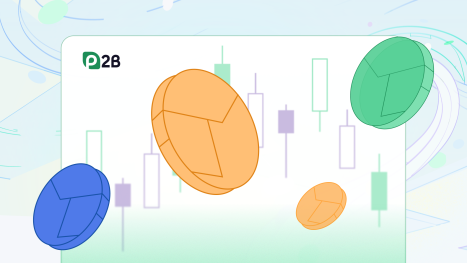Crypto Сoins vs. Tokens: What’s the Difference?

A native blockchain coin and a token are such close concepts that many novice cryptocurrency investors and trading beginners confuse them. However, there is a difference, and you need to know it. In this article, we untangle the terminological tangle and determine the difference between coins and tokens.
Who is Who?

Let’s define what is meant by the terms coin and token.
What is a crypto coin? It’s a cryptocurrency based on a proprietary blockchain. You can purchase goods and services and conduct trading operations and exchange with other users as if you use traditional money. The main characteristic which differentiates tokens vs coins are that the latter are a unit of payment, a medium of exchange, and have a value of their own. In addition, coins operate independently, so they do not require other trading platforms or exchanges to exist. The prominent example of the native cryptocurrency on its blockchain is Bitcoin, and XRP developed by Ripple.
Tokens are virtual assets, you could say shares, created based on existing platforms. They provide services or certain rights within the system itself. For example, for investments, exchange to other services, access to some products, or paying for advertising. You can also exchange a token to another cryptocurrency if it is listed on crypto exchanges. Let’s draw an analogy between tokens and a gift certificate to a store to make it easier to understand. For example, you can’t use this certificate to go to the theater because it is designed for a specific place and purpose — to buy things in a store. So each token is aimed at particular services.
Distinctive Features of Coins and Tokens
Let’s answer the question ‘What is the difference between a crypto coin and token?’ by highlighting essential characteristics of each of them.
- Unique blockchain
This is the main difference between tokens vs. coins . The latter operates on an existing platform and meets specific standards like ERC20, TRC20, Waves, and BEP20. On the other hand, coins are based on their blockchain, usually with unique properties. For example, the Solana coin has a specific consensus that uses a timestamp. - Use as a means of payment
The primary function of the cryptocurrency is to provide payment capability between project participants and beyond. That is why they are considered an alternative to fiat money and trading assets. Advantages compared to the usual currency are the complete decentralization and independence from the decisions of the country’s state authorities or financial institutions. - Extraction method
Coins are always issued according to the rules provided by the developer. For example, bitcoin appears as a reward for miners’ work and their processing of complex mathematical calculations. And Ether in the 2.0 protocol is added for coin storage and transaction validation.
Tokens vs. Coins: Application Areas
If everything is simple with coins, it is essentially a fuel for trading operations then, everything is much more interesting with tokens. Let’s look at what types of tokens there are and what they are used for:
- Utility tokens
Utility tokens certify the right to access existing products or services that will be created in the future. Often crypto projects issue and sell such tokens precisely to obtain funds for project development and the development of those same products or services.
Examples of popular utility tokens: Axie Infinity, MATIC, MANA, Filecoin, Cronos. - Security tokens (STO)
A security token (STO) is a form of digital asset that confirms ownership of certain assets or participation in distributing profits and other tangible benefits. However, some countries have restrictions and regulations on STO circulation, the USA is one of them. For example, Crypto exchanges are not allowed to start selling such tokens, and obligatory warn that USA users cannot participate.
Examples of popular security tokens: tZero, INX Limited. - Debt tokens
Debt tokens are a counterpart to short-term loans made by investors to blockchain projects. Owners receive additional funding to develop the project and pay interest to the owners. - Asset-backed tokens
Tokens are backed by an asset from the real world, such as stocks, gold, or real estate. These digital assets give holders ownership of tangible assets. It can be even a tokenized cryptocurrency.
Examples of popular asset-backed tokens: Bananas, Cannabium, El Petro. - Governance tokens
Owners of Maker (MKR) and Compound (COMP) tokens have the right to participate in making decisions about the life of the crypto project by voting.
Examples of popular governance tokens: Ethereum, Bitcoin, Cardano. - Non-fungible tokens (NFT)
These are non-interchangeable tokens, and their purpose is to create a single digital version of a unique object, for example, a painting, a soccer card, a song, and other works of art, which you can purchase on specific exchanges. Because of their specificity, NFTs can only be in a single number, unlike tokens, which can be in the thousands or millions.
Examples of popular NFT: CryptoPunks, Bored Ape Yacht Club, CryptoKitties, The Merge, Everydays: The First 5000 Days, Human One.
The Most Popular Cryptocurrencies

You may ask, “So is a cryptocurrency a coin or a token?“ The answer is that both can be called cryptocurrency in the full sense of the word. This raises another logical question ‘what is a good crypto coin to buy?’ Let’s look at the top of the biggest cryptocurrencies and see how many are coins with their blockchain and how many are tokens. We will determine the value based on the total market value of a cryptocurrency circulating supply on Coinmarketcap.
- Bitcoin
Bitcoin is the progenitor of the crypto environment as we see it now. It is built on its blockchain and is undoubtedly a coin. - Etherium
Ethereum is a smart contract platform that developers use to create decentralized applications (DApps) on its blockchain. Ether is the native digital currency of the Ethereum platform, and it has a legitimate place among coins. - Tether (USDT)
It is the main stablecoin, cryptocurrency whose value is tied to a particular fiat currency. Simply put, Tether is a manifestation of the U.S. dollar in the crypto environment. Tether is a specific token. Currently, It is issued on Bitcoin, Ethereum, and a few more blockchains at once. - USD Coin (USDC)
Another stablecoin pegged to the U.S. dollar at a 1 to 1. Its difference is that each unit of this cryptocurrency in circulation is backed by 1 fiat dollar, which is held in reserve as a mix of cash and short-term U.S. Treasury bonds. In terms of coin or token, USDC refers to the latter, as they use the Ethereum blockchain. - Binance Coin (BNB)
And here is an interesting situation. BNB, in a nutshell, is a means of payment and a technical token for paying commissions on an exchange. It initially used Etherium but later migrated to BNB’s blockchain BEP 2. Does it turn this token into a coin after that? What do you think about that?
What Happens When a Crypto Coin is Burned?

There is a concept in the cryptocurrency sector called tokenization. Coin creators destroy part of the issue to limit the supply, thereby increasing the asset’s value. All coin-burning transactions are recorded in the blockchain ledger, so anyone can verify that the coins have been permanently removed from circulation.
When creating a new cryptocurrency, developers calculate a mathematical model determining the asset’s value. Suppose a digital coin fails to achieve set goals. In that case, the developers destroy some of the tokens. However, holders of this cryptocurrency can not worry that their tokens will be destroyed because the founders burn digital coins that belong to them. Fuel for burning comes from special pools created when tokens are used. These can be pools formed from commissions of transactions, earning, and staking.
Conclusion
So let’s summarize and recap the key facts tokens vs. coins:
- Coins are always built on a new blockchain, while tokens are created on existing ones.
- Coins are much harder to create compared to tokens.
- Coins are almost always mined using mining, while an emission is the primary way of creating tokens.
- Crypto coins can be used as a counterpart to real money with third-party companies that use the coin. Whereas tokens, depending on the type, can only function in conjunction with a parent platform.
In general, both can be called a cryptocurrency. Therefore, you will still be understood if you call a coin a token and vice versa. However, suppose you plan investing in cryptocurrencies or trading on crypto exchanges. In that case, you need to know such nuances to recognize what your money is for.



